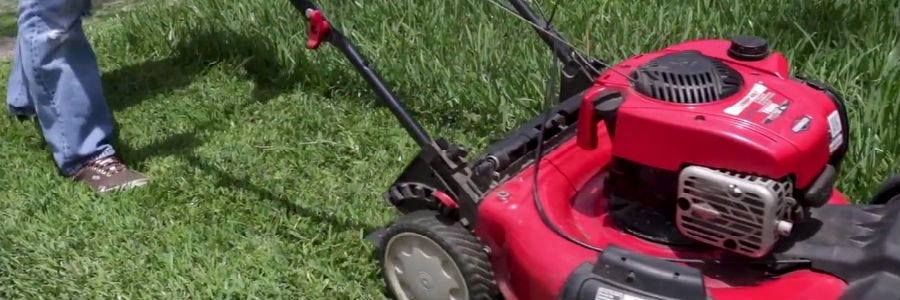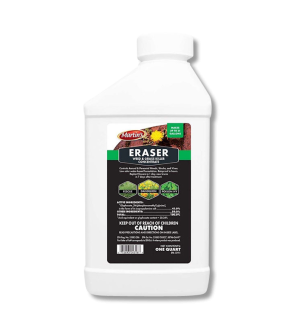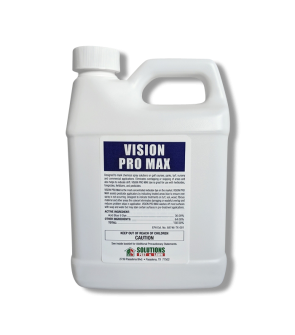Downy Brome Control
Most Effective Products
Downy Brome Control: How To Get Rid of Downy Brome
Downy Brome, also known as Cheatgrass, is one of the more serious weeds that can emerge onto lawns and it is commonly a nuisance to livestock producers on ranges and pastures. Downy Brome is a versatile winter annual that has the ability to thrive in all types of soils.
Some characteristics of Downy Brome is its shallow root system with roots which possess many hairs that allow the plant to extract much of the water from the soil. Downy Brome can be short or tall. The leaves on the grass are really small and can go unnoticed until they grow their large drooping seedheads.
Downy Brome germinates in the fall and resides as a super tiny plant over the winter. The weed then takes advantage of any spring moisture available and then produces thousands of seeds. If you have Downy Brome on your lawn, you are going to want to get rid of it as soon as you can because it could become troublesome to get rid of it when they are well-established and mature.
Our DIY Downy Brome treatment guide covers everything you need to know about this plant and what herbicides work best to get rid of it. Follow the step-by-step instructions below using the recommended herbicides to the right and Downy Brome will be gone in little time.
Identification
Downy Brome (Bromus tectorum) is also known as Cheatgrass and can be either short (3 to 6 inches) or up to 18 inches tall depending on how much moisture it gets. Downy Brome is usually not noticed right away until it has grown to the point where it is producing their unique droopy seedheads with many little spikelets between 10 to 18 mm long which really makes it stand out. Their leaves are hairy and soft and pleasant to the touch.
When Downy Brome matures, the seed heads become brownish-red begin to drop their seeds to set the stage for the next generation. When young, Downy brome is a palatable grass before the seed heads emerge but become unpalatable with maturity. Mature downy brome can also injure livestock by causing infection in the eyes or mouth. Mature plants also are a serious fire hazard so when controlling downy brome, you are going to want to act fast to not let them mature.
Use the description and image above to help you to identify Downy Brome present on your lawn. If you have trouble identifying the weed yourself, you can always take a picture of it and send it to our experts. We will respond back to you quickly with not only the correct identification of the plant, but we will also give you expert recommendations of products and techniques to apply to remove that weed from your lawn.
Inspection

Where to Inspect
Downy Brome typically grows in the Fall mostly on loose, sandy, moist soils in ranges and pastures as well as sandy or gravelly areas along railroads, pastures, abandoned sandy fields, open areas of park, mined land, and barren waste areas.
This grass tends to take over open areas with infertile soil which has gone through stressful conditions, whether from occasional wildfires, grazing, or other causes.
What To Look For
Downy Brome are grasses with droopy unique seedheads. Downy Brome seedheads stand out so they will be hard to miss.
Treatment
Please be sure that when handling any type of herbicide, you are properly protecting your skin and eyes with safety equipment. Goggles, gloves and long-sleeved clothing should be the minimum.
The best active ingredient to control Downy Brome is Glyphosate so use Eraser to tackle this problematic weed. Glyphosate can give excellent control of Downy Brome but with it being non-selective it will destroy any plant in its path so if you have Downy Brome growing in close quarters to your desired grasses and vegetation you will want to be careful and spot treat using a spray indicator dye like Vision Pro Max.
Not many product labels are specifically labled for downy brome, but Eraser 41% is a powerful herbicide against various grassy weeds.
Step 1 - Spot Treat With Eraser

Eraser contains 41% Glyphosate as an active ingredient and works systemically through the foliage down to the root killing the entire plant within days. Keep in mind that Eraser is a non-selective herbicide and thus is a kill-all treatment. Use Eraser as a spot treatment and be careful not to get the chemical on any of your desired vegetation. An indicator dye like Vision Pro Max mixed with the spray application will aid you in keeping track of where you spray so you don't accidentally spray on your desired grass.
Measure the square footage of the treatment area to determine how much Eraser you need. For spot treatments, 2.5 oz. of Eraser in a gallon of water can treat 300 sq. ft. Mix the appropriate amount of Eraser into your sprayer with Vision Pro Max indicator dye (at a rate of 6 to 10 fl. oz. per 100 gallons of spray solution) to help you keep track of where you spray. Agitate the sprayer and you are ready to spray.
With a fan tip nozzle, spot spray the Downy Brome to ensure it is evenly coated. You may need to do repeat applications after 7 to 10 days if the weed is particularly persistent and problematic.
Eraser is a non-selective herbicide and will kill whatever you spray so you must be very careful when applying Eraser if Downy Brome is near your desired grass. In some cases, it may be better to paint the product on the Downy Brome with a brush or block the desired grass with a piece of cardboard.
For best results, make sure to apply Eraser at the right time. Downy Brome should be treated with herbicides when it is in active growth. Apply post-emergents in the springtime when the growth is less than 6 inches in length or apply pre-emergents in the fall or early spring to keep their seeds under control. Repeated applications may be necessary depending on the species, the persistence and the age or maturity of the plant.
Prevention

You can prevent the return of Downy Brome after it has been controlled with cultural practices that will hinder the redevelopment of this invasive grassy weed. A lush and healthy lawn is less prone to invasion by the Downy Brome plant. Downy Brome grass grows best in poor soil and disperses an allelopathic chemical that keeps wanted plants from growing.
Properly fertilize your turf at the best time recommended for your particular grass. Mow your grass regularly and at the right height. Downy brome thrives on sunlight so keeping a lush lawn shades out weed seeds which hinders the growth of the weed. Reseed thin patches of turf in the lawn as an effective means of downy brome control.
Before applying fertilizer, take a soil test to determine which areas need attention to promote thick, healthy turfgrass on your lawn. Downy Brome does not grow well in areas that have high nitrogen in the soil.
Key Takeaways
- Downy Brome is a versatile winter annual which has the ability to thrive in all types of soils.
- We recommend either using Eraser (Glyphosate 41%) when the plant has emerged to keep Bowny Brome under control.
- Prevent the return of downy brome by establishing a good lawn maintenance routine (mowing regularly at the right height, watering and fertilizer)













































































































































































































































































































































































































































































































































